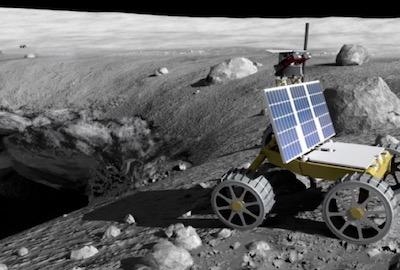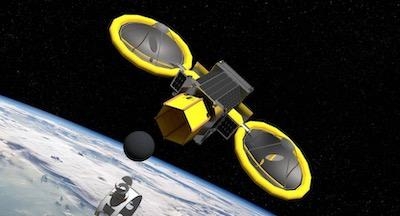To Mission Concepts Selected For Phase III Studies In The NIAC Program
Robotically surveying lunar craters in record time and mining resources in space could help NASA establish a sustained human presence at the Moon – part of the agency’s broader Moon to Mars exploration approach. Two mission concepts to explore these capabilities have been selected as the first-ever Phase III studies within the NASA Innovative Advanced Concepts (NIAC) program.

“We are pursuing new technologies across our development portfolio that could help make deep space exploration more Earth-independent by utilizing resources on the Moon and beyond,” said Jim Reuter, associate administrator of NASA’s Space Technology Mission Directorate. “These NIAC Phase III selections are a component of that forward-looking research and we hope new insights will help us achieve more firsts in space.”
The Phase III proposals outline an aerospace architecture, including a mission concept, that is innovative and could change what’s possible in space. Each selection will receive as much as $2 million. Over the course of two years, researchers will refine the concept design and explore aspects of implementing the new technology. The inaugural Phase III selections are:
Robotic Technologies Enabling the Exploration of Lunar Pits - William Whittaker, Carnegie Mellon University, Pittsburgh

This mission concept, called Skylight, proposes technologies to rapidly survey and model lunar craters. This mission would use high-resolution images to create 3D model of craters. The data would be used to determine whether a crater can be explored by human or robotic missions. The information could also be used to characterize ice on the Moon, a crucial capability for the sustained surface operations of NASA’s Artemis program. On Earth, the technology could be used to autonomously monitor mines and quarries.
Mini Bee Prototype to Demonstrate the Apis Mission Architecture and Optical Mining Technology - Joel Sercel, TransAstra Corporation, Lake View Terrace, California
This flight demonstration mission concept proposes a method of asteroid resource harvesting called optical mining. Optical mining is an approach for excavating an asteroid and extracting water and other volatiles into an inflatable bag. Called Mini Bee, the mission concept aims to prove optical mining, in conjunction with other innovative spacecraft systems, can be used to obtain propellant in space. The proposed architecture includes resource prospecting, extraction and delivery.
NASA selected the Phase III proposals through a review process that evaluated innovativeness and technical viability of the proposed projects. All projects still are in the early stages of development, but this final phase is designed to mature technologies so they can be transitioned to government and industry for implementation.

“This is the first year NASA offered a NIAC Phase III opportunity, and there were many strong proposals,” said Jason Derleth, NIAC program executive. “We selected two proposals because we think both of the technologies could positively impact the industry. We are excited that these technology concepts could help humanity explore space in new ways.”
The NIAC program supports visionary research ideas through multiple progressive phases of study. While NIAC will award two 2019 Phase III studies, the program expects to award one Phase III per year in subsequent years.
NIAC partners with forward-thinking scientists, engineers and citizen inventors from across the nation to help maintain America’s leadership in air and space. NIAC is funded by NASA’s Space Technology Mission Directorate, which is responsible for developing the cross-cutting, pioneering new technologies and capabilities needed by the agency to achieve its current and future missions.
Charged with returning astronauts to the Moon within five years, NASA’s lunar exploration plans are based on a two-phase approach: the first is focused on speed – landing on the Moon by 2024 – while the second will establish a sustained human presence on and around the Moon by 2028. We then will use what we learn on the Moon to prepare to send astronauts to Mars.
(Images provided with NASA news release)
 ANN's Daily Aero-Term (05.01.24): Say Altitude
ANN's Daily Aero-Term (05.01.24): Say Altitude ANN's Daily Aero-Linx (05.01.24)
ANN's Daily Aero-Linx (05.01.24) Classic Aero-TV: Korean War Hero Twice Reborn
Classic Aero-TV: Korean War Hero Twice Reborn Airborne 04.29.24: EAA B-25 Rides, Textron 2024, G700 Deliveries
Airborne 04.29.24: EAA B-25 Rides, Textron 2024, G700 Deliveries Airborne Affordable Flyers 05.02.24: Bobby Bailey, SPRG Report Cards, Skydive!
Airborne Affordable Flyers 05.02.24: Bobby Bailey, SPRG Report Cards, Skydive!





